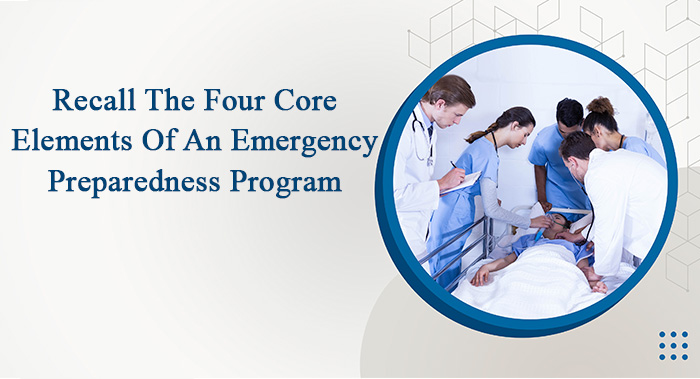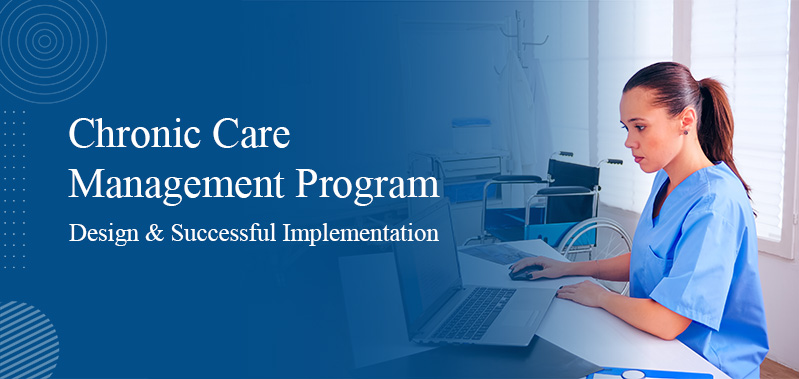
Recall The Four Core Elements Of An Emergency Preparedness Program
Do you have a well-planned emergency preparedness program? Does it comply with the CMS's new guidelines or a TJC compliance? If you’re an organization participating in Medicare and Medicaid Programs, then it’s imperative to have a robust Emergency Preparedness Plan. The final Emergency Preparedness rules and regulations enacted by the Centers for Medicare and Medicaid Services (CMS) were published in September 2016 for providers and suppliers that had until November 15, 2017. This new rule ensures that the emergency plans comply with the new regulations and develop strategies accordingly.
The purpose of implementing this regulation was to safeguard Federally Qualified Health Centers (FQHCs), healthcare facilities that cater to Medicaid/Medicare beneficiaries, and the individuals under their care during various emergency scenarios, including earthquakes, floods, active shooter incidents, biohazard threats, winter storms, hurricanes, tornadoes, and other potential crises. Under this mandate, these healthcare establishments were mandated to develop comprehensive disaster plans capable of successfully passing a hazard vulnerability analysis (HVA).
Moreover, these facilities must demonstrate their compliance with disaster preparedness regulations by November 15, 2017. These regulations specified that these plans should include the following:
- Clear steps during and after an event of a natural disaster
- Constructive training for staff on CMS Regulatory Requirements For Emergency Preparedness Programs
- Steps to fulfill necessary supplies or facilities for survivals or patients
The Four Core Elements Of An Emergency Preparedness Program
Four significant elements must be integrated into an organization’s emergency preparedness program to comply with the new rules and regulations. It should also be reviewed and updated annually to accomplish the expected roles and responsibilities of the authorities. The following core elements are as follows:
Risk Assessment and Planning
In developing an emergency plan, organizations must conduct a comprehensive assessment of potential risks they may encounter and subsequently formulate strategies to address these risks. The outcomes of risk assessments can serve as a foundation for identifying critical components that should be integrated into the emergency plan. They can also inform updates to existing projects, new training programs, and the enhancement of exercise routines.
Policies and Procedures
Policies and procedures play a central role in healthcare organizations' emergency preparedness efforts and must be precise to the initiatives in question. New policies and procedures should be aligned with the outcomes of risk assessments. CMS mandates that these policies and procedures address critical aspects such as subsistence needs, evacuation plans, shelter-in-place strategies, and patient and staff tracking during emergencies.
Communication Plan
Effective communication is pivotal in emergency response. CMS requires organizations to develop a communication plan that complies with federal and state laws as part of their emergency plan. This plan should encompass contact information for staff, other healthcare facilities, volunteers, state and local officials, and primary and alternative means of communication with staff and external agencies. Additionally, it should outline a method for sharing patient information.
Regarding the integration of this communication plan with existing emergency operations plans, it can be embedded within an existing project as long as the required communication elements are highlighted.
Regarding crisis communication, it assesses critical issues, such as resource allocation and risk mitigation, to determine the specific information that needs to be communicated to staff, patients, visitors, or partners during an emergency.
Training and Testing
Surrounding training, testing, and exercise execution within organizations are pivotal tasks to comply with CMS regulatory requirements. Testing and conducting exercises are integral to training and reaching out to hospital partners to explore participation in local or state-level exercises, as these are more complex tasks.
CMS mandates two testing exercises annually, a tabletop exercise can fulfill one of these requirements, while the second exercise should be a community-based, full-scale exercise. Collaborating with the local community to identify critical issues based on risk assessment results and selecting one for a tabletop exercise and another for a full-scale exercise is also important. CMS offers flexibility in meeting this requirement, allowing participants to tailor exercises to their specific needs and circumstances.





